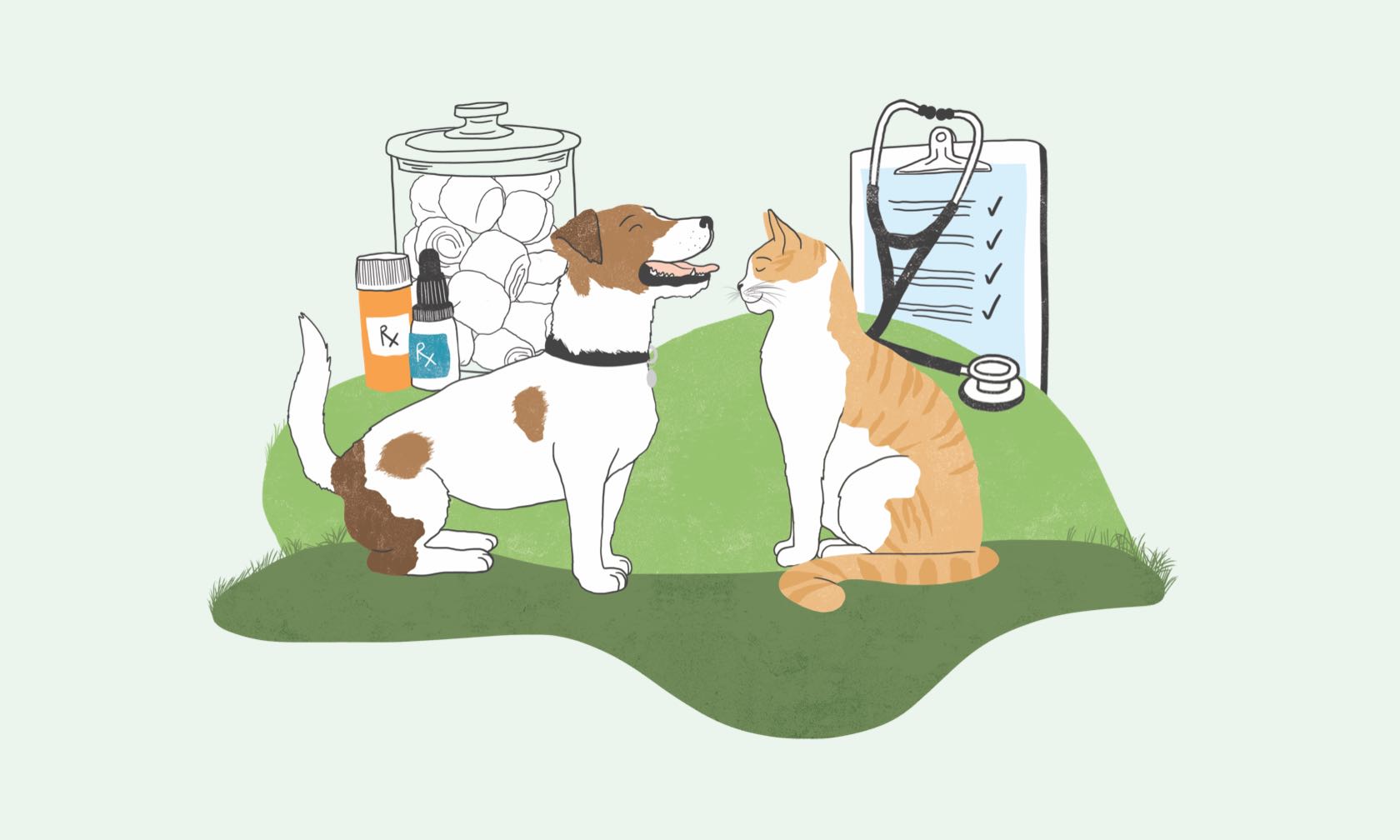Dogs and humans share many similarities in how their bodies work — including how their hearts function. Just like people, dogs can suffer from heart conditions, and one of the most common is dilated cardiomyopathy (DCM). This serious disease is the second-most prevalent form of heart disease in dogs, affecting approximately 1 in 100 across the U.S.1 Understanding DCM is essential for early detection and effective treatment.
What is DCM in Dogs?
When dogs develop dilated cardiomyopathy, the heart muscle degenerates and can’t effectively pump blood. This increases pressure within the heart, stretching and thinning of the muscle wall, which in turn dilates and enlarges the heart. As the heart struggles to pump, the valves of the heart can begin to leak, causing fluid to build up in the chest and abdomen.
In most cases, the cause of DCM in dogs is unclear, but inherited predisposition, nutrition, infection, chemicals, and toxins have all been implicated as risk factors.
Breeds that are predisposed to DCM include:1,2
- Boxer
- Cocker Spaniel
- Doberman Pinscher
- Great Dane
- German Shepherd
- Giant and Standard Schnauzer
- Irish Wolfhound
- Labrador Retriever
- Newfoundland
- Portuguese Water Dog
- Saint Bernard
- Scottish Deerhound
- Toy Manchester Terrier
It’s less common in puppies and young adults.
To learn more about these breeds, check out the Breed Explorer.
Signs of Dilated Cardiomyopathy in Dogs
Dilated cardiomyopathy can develop quickly. Catching the clinical signs early means your dog can start treatment right away to improve and prolong their quality of life.
Early signs of DCM in dogs may not be noticeable, but one sign is exercise intolerance. Signs of exercise intolerance can include lethargy, reluctance to play, sudden weakness while playing, heavy breathing during activities, abnormal gait during or after activity, or collapse during or after activity. If you see any of these signs, notify your veterinarian.
Your veterinarian may catch the disease early by noticing an abnormal heart sound (heart murmur) or irregular heart rhythm during a routine physical examination.
When the clinical signs develop, they can be sudden or progress slowly. They can include:
- Increased respiratory rate during rest or sleep
- Increased effort to breath
- Difficulty resting
- Coughing
- Weakness
- Exercise intolerance
- Decreased appetite
- Swollen abdomen
- Weight loss
- Fainting
- Depression
- Collapse
- Sudden death
How Is Dilated Cardiomyopathy Diagnosed in Dogs?
Diagnosis of DCM in dogs involves several exams and tests. To diagnose dilated cardiomyopathy, your veterinarian will need to perform a cardiac examination to evaluate for signs of heart failure.
Blood and urine tests, chest radiographs, electrocardiogram (ECG), and echocardiogram (heart ultrasound) are important for an accurate diagnosis as well. Your veterinarian may send you to a veterinary cardiologist.
These tests help your veterinarian to determine the severity of your dog’s condition and the degree of treatment needed.
What Is the Treatment For Dilated Cardiomyopathy in Dogs?
Since DCM is irreversible and progressive, the goal of treatment is to slow the progression and manage the clinical signs and discomfort.
All dogs with DCM, even those not showing clinical signs, are treated with medications that increase blood flow, remove excess fluid, lower blood pressure, improve heart function, and control arrhythmia. As the disease progresses, the number of medications and their dosage increases.
Dietary changes and nutritional support can sometimes benefit certain breeds. This condition has been linked to feeding non-traditional diets, such as certain grain-free diets. In some cases, diet change may help.3
Despite aggressive treatment, some dogs do not resume their normal lifestyle.
Life expectancy ranges from six to 24 months for those who respond well to treatment. Doberman Pinschers tend to have a less favorable prognosis than other breeds.4 Once diagnosed, they have been shown to only live as little as three months.
Can You Protect Your Dog from Dilated Cardiomyopathy?
In most cases, DCM is not completely preventable, but there are things you can do to try and minimize the impact. Avoid certain non-traditional diets, such as “grain-free” diets . Raw and homemade diets can also be a concern.4
Any breeds that are predisposed to DSM should be genetically tested. If you’re buying or adopting one of these breeds, ask if genetic testing was done on the parents or have it done yourself. You can also do routine screenings to increase your chances of catching the disease early.
Dogs, especially males and predisposed breeds, should have routine physical exams and cardiac workups every six to 12 months, starting at three years old, in order to detect the early signs of DCM.
ZPC-04435
- Dilated cardiomyopathy. Cornell University College of Veterinary Medicine. https://www.vet.cornell.edu/departments-centers-and-institutes/riney-canine-health-center/health-info/dilated-cardiomyopathy. Accessed March 8, 2024.
- Dilated Cardiomyopathy in Dogs and Cats. Merck Manual Veterinary Manual. https://www.merckvetmanual.com/circulatory-system/cardiomyopathy-in-dogs-and-cats/dilated-cardiomyopathy-in-dogs-and-cats. Accessed March 8, 2024.
- Dilated Cardiomyopathy in Dogs. VCA Hospitals. https://vcahospitals.com/know-your-pet/dilated-cardiomyopathy-dcm-in-dogs--indepth. Accessed March 8, 2024.
- It’s Not Just Grain-Free: An Update on Diet-Associated Dilated Cardiomyopathy. Cummings School of Veterinary Medicine Clinical Nutrition Service. https://vetnutrition.tufts.edu/2018/11/dcm-update/. Accessed March 8, 2024.



